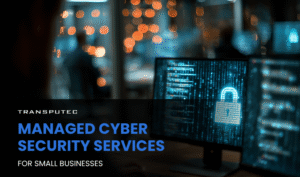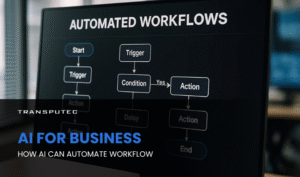Cybersecurity never sleeps. It constantly changes with new tools entering the IT landscape, and evolving tools, techniques and threats for organisations as attackers search for new (and old) ways to compromise security protections. For organisations’ IT teams, simply keeping up with these changes is a 24/7/365 job, and there are often gaps which leave the organisation exposed. That’s where managed detection and response services (MDR services) provided by external providers can really make a difference for their customers.
We explore the ways in which managed detection and response services support organisations to improve their cybersecurity posture, without straining the resources of already overworked IT and IT security teams.
What are managed detection and response services?
Managed detection and response services provide outsourced threat hunting and response services for organisations of all sizes and across all industries.
MDR service providers combine technology and human expertise to proactively identify threats, monitor networks, detect attack vectors, and respond to them quickly and effectively. Managed detection and response services contain teams of skilled experts including researchers who carry out threat hunting activity and engineers who monitor the network to make improvements and detect and respond to incidents.
The purpose of managed detection and response services is to provide a flexible, up-to-date and effective service which upskills organisations to understand the threats they face, manage those threats, and remain compliant in the dynamic threat landscape.
How do managed detection and response services work?
Managed detection and response services will secure an organisation throughout the entire security lifecycle: implementing the technology to protect and monitor the environment and detect attacks, identifying when attacks do take place, and responding to those attacks. There are three key elements to MDR services:
Monitoring
Monitoring typically takes place through specific tools such as endpoint detection and response (EDR) solutions on individual devices, or through firewall or antimalware technologies in place.
The MDR service’s analysts and engineers will ensure that all technology is configured correctly to monitor for suspicious activity, collect information through logs, and alert when suspicious activity does take place.
Detection
Detection typically takes place through the various tools that are in place for monitoring and logging activity across devices, applications, and the network.
When an incident is detected, the relevant system (or systems) will alert the managed detection and response service, who will triage the alert, and apply their experience and acquired knowledge from threat intelligence, advanced analytics, and forensic data to define the severity of the detected incident.
Response
The managed detection and response team will work with the organisation’s own IT team to remove the threat, investigate for any further evidence of an incident across endpoints and networks, and if possible restore systems immediately. If a wider forensic activity or incident response is required, the MDR service will take part in that too.
What are the key benefits of an MDR service?
Continuous security monitoring
Cyber attackers never sleep. Statistically, more attacks take place out of hours – at night, at weekends, and around major holidays.
As a result, organisations need to be able to constantly monitor the network, 24/7, 365 days a year. However, a combination of small cybersecurity teams and a lack of experienced cybersecurity professionals makes finding this round the clock coverage extremely challenging.
Managed detection and response services provide that service for organisations, constantly monitoring the environment for security alerts, and ready to respond the moment an alert is sounded.
Extensive threat visibility
The threats to organisations are constantly changing, as cyber attackers adopt new tools, tactics, and techniques to gain access to networks.
Threat hunting is a specialised role that many in-house teams will struggle to fill, and also requires backup from the team around them to reduce the risks of these threats. Managed detection and response services are built around these two disciplines to carry out proactive threat hunting which in turn can be used to identify previously unknown intrusions within the IT environment.
Quick response
In a cyber attack, every minute counts. The longer an attacker is able to access the system or network, the greater impact they will have on your organisation.
Managed detection and response teams are primed and trained for an attack that may come at any time. The second the alarm is sounded, the incident response team will move into action, containing any affected systems, removing internet access, and beginning the operation to identify and understand what has been affected.
Incident response coordination
Incident response efforts can be chaotic, there are many different strands of activity, and every member of the response team needs to be able to know the latest developments.
The key to managing incidents is communication and central repositories of truth, where every team member can see what is needed. The managed detection and response team contribute that central point, enabling affected organisations to coordinate through them.
Expert provision
As cyber attacks develop, organisations need to have experts on hand who have their fingers on the pulse of latest attack techniques, and who can help upskill teams.
The economies of scale of a managed detection and response service enable teams to be filled with cybersecurity experts, many of whom have their own specialisms. Customers are able to benefit from this expertise without having to invest in creating it (which can take a long time and a lot of investment). This also leaves your team able to function on keeping the organisation running.
Assurance and compliance
As focus increases on cybersecurity customers, regulators, insurers, boards, even your own employees all want evidence that you are taking a proactive approach to cybersecurity.
Engaging a managed detection and response service will demonstrate that you are investing in cybersecurity best practices, and finding solutions to ensure that you are not only compliant with these practices and regulations, but that you have effective security in place too.
Discover more about how Transputec’s managed detection and response service can help you improve your overall security posture, and protect your organisation against the ever evolving threat landscape.







